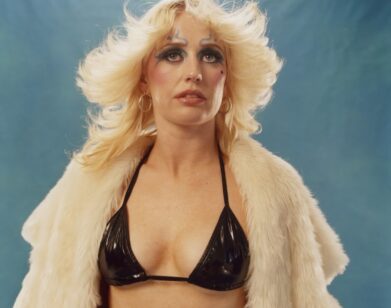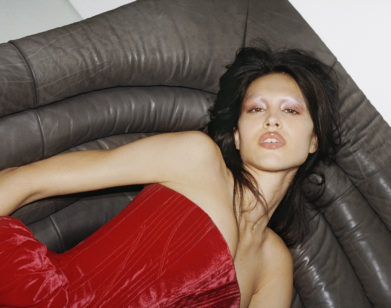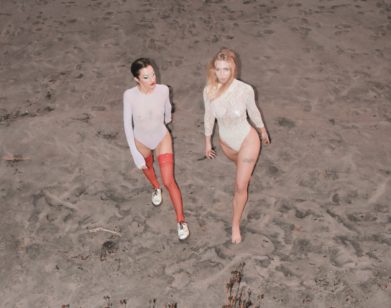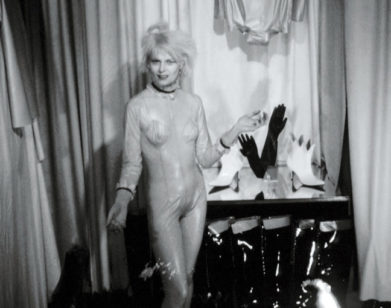A New Exhibit of Punk-era Lust Reminds Us How Gentrified Sex Has Become
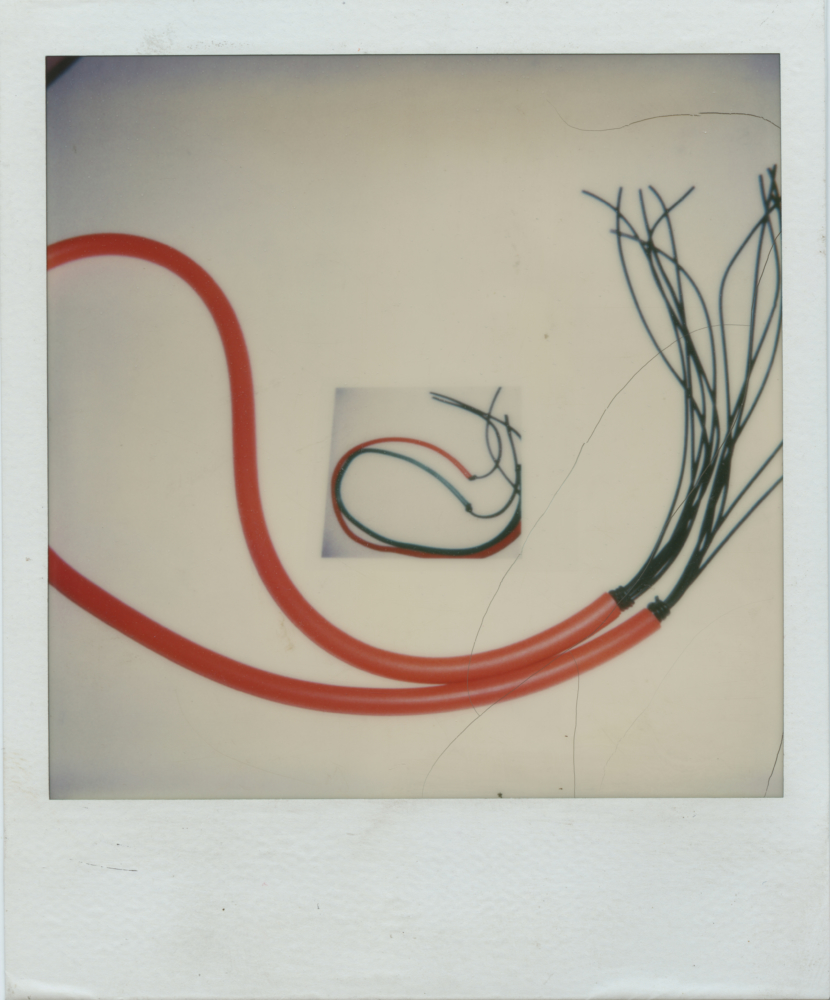
A whip belt and brace necklace by Maripol
My friend and I were in the Lyft, talking about her Virgo man, my Scorpio woman, and what a funny feeling it is to be a social person with zero sexual interest in the people one socializes with. Ten minutes later, we were standing on the fifth floor of the Museum of Sex, in a room designed to look like a cage, staring at a picture of a man with a noose around his neck, hanging from a doorway with a full-on erection. It began to maybe feel like we had been projecting too much nuance onto our own lives.
To be exact, the room we were in was a replica of the defunct Manchester nightclub Haçienda, and had been made over on the occasion of museum’s latest exhibit, Punk Lust: Raw Provocation 1971–1985. The show is full of detritus about bodies outfitted to look like detritus — snapshots, tattered zines, leaflets, and posters stuffed with figures writhing on stages, lounging in dilapidated love dens, held by force in sadomasochistic positions, or posing proudly with pale bare flesh peeking through ripped garments. There are the requisite Vivienne Westwood tops and pictures of Debbie Harry, but also relics unearthed from the lost canons of hardcore pornography.
Taken together, Punk Lust is a reminder that the bygone subcultures that we now aesthetically ogle were actual lifestyles were at one point lived by actual human beings. A true punk dressed like a punk, lived in anti-establishment opposition like a punk, but, presumably, also ate like a punk and fucked like a punk. As the show’s creative director, and storied New York nightclub owner, Serge Becker reminded me, the sadomasochistic imagery of New York’s punk scene was most likely a result of the city’s former status as a sex industry boomtown. Even some punks themselves made a living as sex workers.
A guiding tension of the show is that the punk ethos was largely antithetical to lust — at least lust as we define it now in a contemporary culture obsessed with self-care. Rather than an act of body-positive worship, lust according to the punk worldview is an act of defilement — and poetry is found in this physical fragility. Take the vitrine of jewelry in the exhibit made by the designer and artist Maripol. Fashioned from industrial and readymade materials, her post-apocalyptic wares look as though they could be swept off the floor of a packaging plant. Yet, the pliability and semi-translucence of her plastic bracelets and belts take on the uncanny quality of human skin. In Maripol’s hands, preciousness is a product of disposability. This is jewelry made to adorn the sexuality of a disposable body.
Inside the cage-like exhibition, I spoke with Maripol, Becker, co-curator Carlo McCormick, and the photographer and model Richie Shazam, gathered together on two sadistically uncomfortable benches. There, we pondered punk sex, sex parties, and the possibilities of public intercourse in today’s New York City.
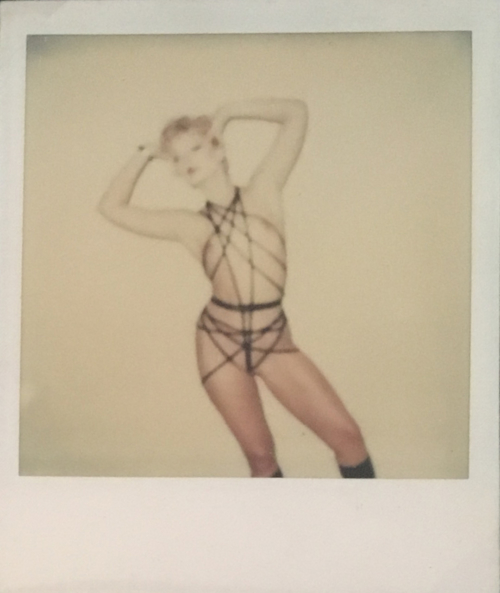
A bondage girl (unknown) photographed by Maripol in 1979
———
MARIPOL: It’s interesting to think about how we had one revolution in America and France in 1968 — and then just ten years later there was this totally different revolution.
CARLO MCCORMICK: I don’t know if you’ve read Greil Marcus’s writing, but he did a book called Lipstick Traces, which was about how punk was repositioning of 1968.
MARIPOL: Thank you!
THOM BETTRIDGE: What confuses me is that just ten years earlier — with, say, the hippies — you had a countercultural movement defined by the concept of free love. But punk love, as it’s shown here, is a total turn towards sadomasochism. Maripol, you just showed me an item you designed that was a rubber belt, but also a whip. I couldn’t imagine seeing this at a hippie party.
MARIPOL: But I had my hippie moment, too — when I was younger.
BETTRIDGE: What changed about the mood that made the sexual expression of punk so violent?
MARIPOL: I think it had to do with the drugs.
SERGE BECKER: You also have to understand the presence that the sex industry once had in New York. We were called Sodom on the Hudson. We didn’t want to out anyone with this exhibition, but tons of people in the punk scene were sex workers.
MCCORMICK: The Ramones wrote a song about doing tricks, based off Dee Dee Ramone’s experience of being a male hustler.
BECKER: It’s hard to express with a show like this how truly fucked up cities like New York were. The closest thing you could compare it to, I guess, is Detroit now.
BETTRIDGE: Does the relationship between sex and public life even exist still? Does anyone go to the club to have sex? In New York, sexuality seems to have been privatized by the dating apps.
MARIPOL: You’re just not going to the right places.
RICHIE SHAZAM: You’re not.
BECKER: Sex parties are happening everywhere, all over the place.
MARIPOL: Where are the dominatrixes? I want to know.
MCCORMICK: There’s a lot of rub and tug places around here.
BECKER: There’s dungeons around here — so many of them.

